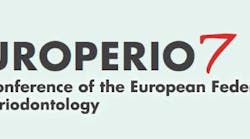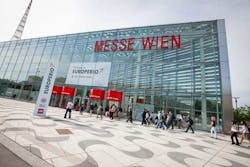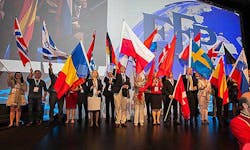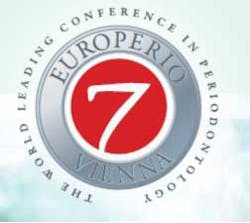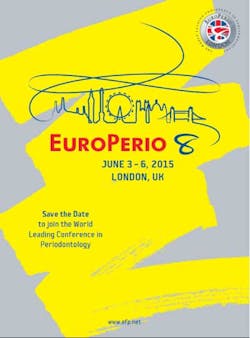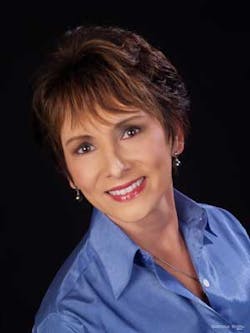EuroPerio 7 covers major aspects of modern periodontal and implant therapy
The European Federation of Periodontology presents the EuroPerio meeting every three years. This year it was held June 6-9 at the Messe Wein in Vienna, Austria. There was a multitude of research presentations, workshops, keynote sessions, and exhibits. I was a co-chair of one of the dental hygiene sessions. The sessions covered all major aspects of modern periodontal and implant therapy.
The Opening Ceremony featured each member society, with a representative that carried the country’s flag. There was music, of course, as we were in Vienna, and other entertainment. They also featured a scientific film, Cell-To-Cell Communication – Osseointegration, introducing innovative video animation technologies into dental education.
Oral implantology plays an important role in graduate and postgraduate dental training at universities around the world. The goal of this film is to instill in students and other viewers a fascination with science. This film is a first step in our efforts to create a series of 3D video training aids visualizing biological topics in dentistry with state-of-the-art tools and methods.
The keynote speaker was Prof. Dr. Josef Penniger, head of the Penniger group. Prof. Dr. Josef Penninger is a biomedical researcher of outstanding reputation who has greatly contributed to our understanding of mechanisms operative in diseases, diseases that affect hundreds of millions of people. He is is one of the most cited Life Scientists in the world.
He has published more than 40 primary papers in Nature, Science, and Cell (and counting) among more than 100 studies in JEM, Circulation, Immunity, or other Nature and Cell Journals (the top journals in their respective fields), a publication record that speaks to his scientific excellence and international standing. Based on his publication record, he was listed twice by ISI under the ten top scientists in the world.
Prof. Dr. Josef Penniger provided the first genetic proof that a gene called RANKL enclosed the master regulatory protein for bone loss (Nature 1999a). Bone loss affects hundreds of millions of patients with cancer metastases, diabetes, immunity, children with leukemia, or AIDS patients, and osteoporosis is one of the most prevalent reasons of death in an aging population.
His work is so important because multiple other factors had been proposed as key regulators of bone loss via osteoclasts, but none of those turned out to be the key. The real breakthrough came with his paper demonstrating that RANKL mutants lack all osteoclasts. All of a sudden, based on his work, reproduced thousands of times, essentially all aspects of bone loss could be explained.
He not only provided the initial trigger to one of the most fundamental fields of biology and medicine, but then discovered the fundamental molecular connections between inflammation and bone loss (e.g., why arthritis leads to crippling) initiating an entirely novel field of research (osteoimmunology, Nature 1999b).
Based on the discovery of RANKL, a novel and rational therapy has been developed already approved for sufferers of osteoporosis, skeletal related events in cancer metastases (which alone affects more than a million patients each year) and, possibly soon for the first time ever, delay of bone metastases.
The next EuroPerio will be June 3-5, 2015, in London, England.
Sincerely,
Maria Perno Goldie, RDH, MS
To read previous RDH eVillage FOCUS introductions by Editorial Director Maria Perno Goldie, go to introductions.
